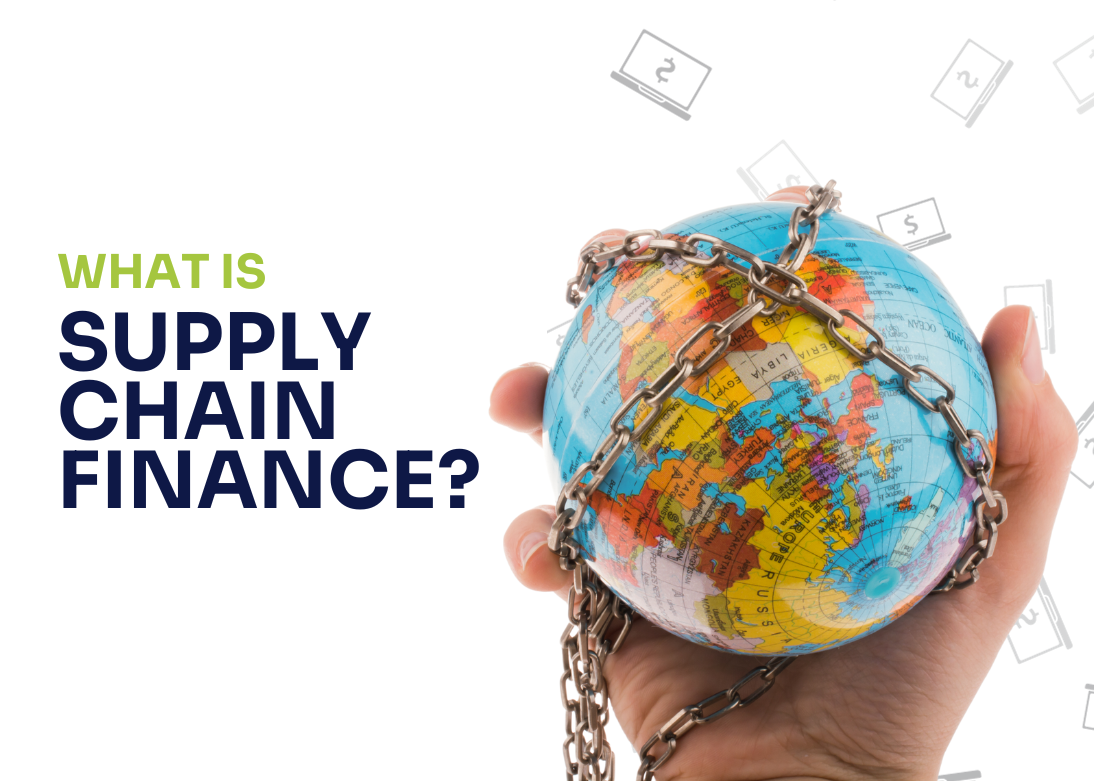Supply chain finance (SCF) is a finance solution that enables companies to offer early payment options to their suppliers. With supply chain finance, suppliers can receive early payment for their approved invoices from a bank or finance provider, while the buyer sends payment to the financial institution on the invoice’s maturity date. This type of finance not only reduces the risk of supply chain disruption but also strengthens supplier relationships while improving the buyer’s working capital.
SCF is also known as ‘reverse factoring‘, although the term ‘supply chain finance’ encompasses a range of supplier financing solutions. In contrast to traditional factoring, SCF is initiated by the purchasing company rather than the suppliers, to finance their accounts receivable. This approach to finance can lead to numerous benefits for both the company and its suppliers.
How does it work?
- The buyer purchases goods or services from the supplier.
- The supplier uploads the invoice to the supply chain finance platform with a due date for payment.
- The buyer approves the invoice.
- The supplier requests early payment for the invoice.
- The supplier receives early payment, at a discount.
- The buyer pays the finance provider on the maturity date.
Benefits of supply chain finance
SCF provides numerous benefits to both buyers and suppliers. The introduction of technology-powered SCF platforms has made it easier for buyers to offer SCF to their suppliers, including smaller suppliers with limited access to affordable funding. With streamlined onboarding processes and a focus on user-friendly experience, these platforms simplify the SCF process and increase the likelihood of a high adoption rate among suppliers. This results in stronger supplier relationships, reduced risk of supply chain disruption and improved working capital management for buyers.
Benefits of supply chain finance for suppliers
The main benefit of supply chain finance for suppliers is improved cash flow through quicker payment processing. They can secure lower-cost funding, which is comparatively lower than other financing options, enhance their working capital, minimise the risk of delayed payments, and increase business stability and security. By partnering with a financial institution to handle payments, both the supplier and buyer can improve their working relationship and foster increased trust and communication.
Benefits of SCF for buyers
The benefits of supply chain finance for buyers include improved liquidity and cash flow management, timely payments, and enhanced profitability.
Buyers also benefit from SCF as they are relieved from requests for early payment, which reduces the risk of damaging their relationship with the supplier due to late payments.
Additionally, offering SCF as a payment option enhances its reputation as a desirable business partner, as suppliers prefer to work with buyers who provide faster payment terms.
Technology and Digital Transformation in SCF
Modern supply chain finance has evolved significantly with the integration of advanced technologies. Blockchain and artificial intelligence are revolutionising how SCF platforms operate, offering enhanced security, transparency, and efficiency. Smart contracts automatically execute payments when predefined conditions are met, reducing manual intervention and potential errors. Machine learning algorithms analyse payment patterns and supplier behavior to assess risks and optimise financing terms.
Cloud-based SCF platforms enable real-time visibility into transaction status, invoice processing, and payment scheduling. This technological advancement has made SCF more accessible to medium-sized enterprises that previously might have found traditional SCF programs too complex or expensive to implement.
Risk Management in Supply Chain Finance
Effective risk management is crucial for successful SCF implementation. Financial institutions and buyers must consider several risk factors:
- Supplier Performance Risk: Evaluating suppliers’ ability to fulfill orders consistently and maintain quality standards.
- Credit Risk: Assessing the creditworthiness of both buyers and suppliers involved in the program.
- Operational Risk: Managing potential disruptions in invoice processing, payment systems, or platform functionality.
- Regulatory Risk: Ensuring compliance with evolving financial regulations and international trade laws.
Organisations can mitigate these risks through careful program design, regular monitoring, and establishing clear performance metrics. Regular audits and updates to risk assessment criteria help maintain program integrity and effectiveness.
Global Trends and Future Outlook
The global supply chain finance market continues to grow rapidly, driven by several factors:
- Increasing adoption in emerging markets, particularly in Asia-Pacific and Latin America
- Growing focus on sustainable supply chain practices and ESG considerations
- Rising demand for early payment solutions among SMEs Integration of alternative data sources for credit assessment
- Expansion of multi-tier financing solutions
Experts predict the SCF market will continue to expand as more organisations recognise its strategic importance in maintaining competitive advantage and supply chain resilience.

Do you find this article interesting?
Subscribe to our Newsletter for updates on the latest blog articles.
Implementation Best Practices
Successfully implementing an SCF program requires careful planning and execution:
Stakeholder Alignment:
- Ensure all internal departments (Finance, Procurement, IT) understand the program’s objectives
- Obtain executive sponsorship and support
- Engage key suppliers early in the planning process
Technology Selection:
- Choose a platform that integrates well with existing systems
- Ensure scalability to accommodate future growth
- Prioritise user experience for both buyers and suppliers
Program Design:
- Define clear eligibility criteria for supplier participation
- Establish transparent pricing and payment terms
- Create comprehensive onboarding materials and training resources.
Monitoring and Optimisation:
- Track key performance indicators regularly
- Gather feedback from participants
- Continuously improve processes based on program data.
Who is using SCF?
Companies across various industries can benefit from SCF, as long as the financial institution assesses the ordering party as low risk and trusts their relationship with the supplier. Sectors that frequently adopt SCF include
- Retail
- Transportation
- Electronics
- Automotive
- Pharmaceutical
- Aerospace
- Oil and Gas
However, it is not limited to these industries and can be used by any company that has a large volume of accounts receivable and cash flow challenges.
Streamline your daily operations with Liquiditas’ Supply Chain Finance solution
If you are unable to grant your suppliers’ requests for early payment due to extended payment terms, Liquiditas is available to assist you.
At Liquiditas, our goal is to enhance your liquidity management and strengthen buyer-supplier relationships through our innovative solutions. With years of expertise in the field, we provide a secure and predictable source of liquidity, empowering suppliers to seize new opportunities. The Liquiditas platform is designed to be a beneficial solution for both buyers and suppliers in the supply chain finance process. Our software is user-friendly and easy to navigate, making it simple for you to enjoy the advantages of SCF. By fostering lasting relationships we ensure financial stability and consistency in your operations. And, as a vital component of your financial management strategy, our solution optimises your working capital, propelling your business towards success.
Final thoughts
In conclusion, supply chain finance is a powerful solution for improving working capital and reducing supply chain disruption. With the benefits it provides to both buyers and suppliers, it is an excellent option for companies looking to improve their financial health and supplier relationships.
As technology continues to evolve and markets become increasingly global, SCF will play an even more crucial role in maintaining competitive advantage and ensuring supply chain resilience.








